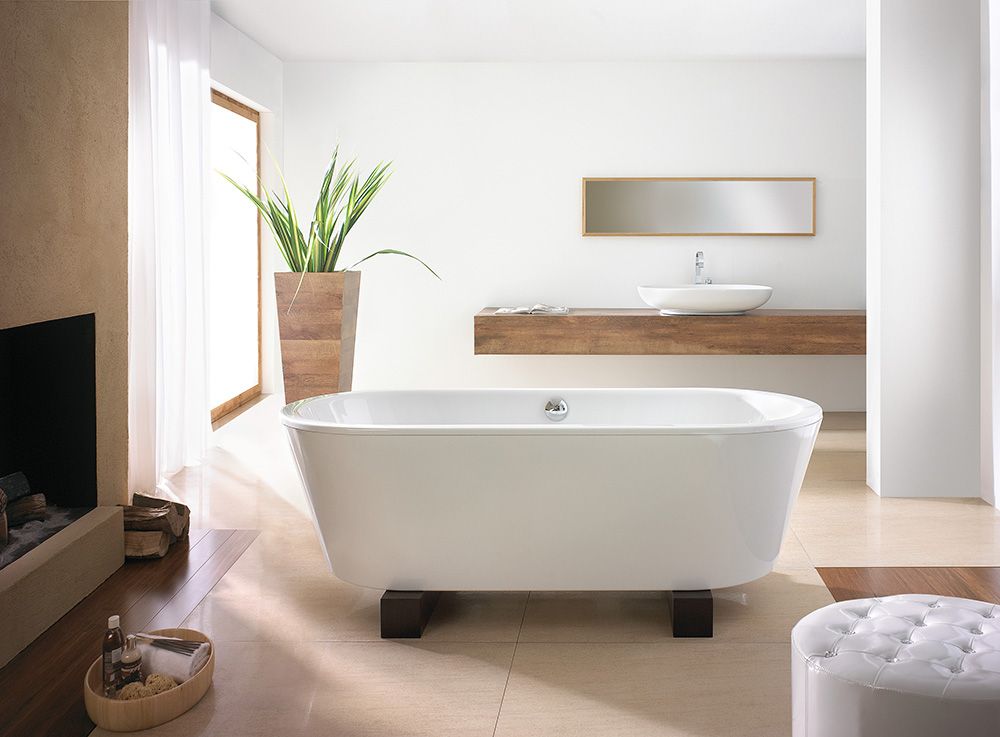Stop choosing a bathtub at random
Types of bathtubs are categorized by their design, and the four main types can be summarized as follows:
1. Freestanding Bathtub:
– The primary advantage of choosing a freestanding model is that it doesn’t need to be placed against a wall. You can position it anywhere in the bathroom, making it easy to use and maintain when needed.
– Freestanding bathtubs require a specific height, so you should check the actual dimensions before purchase.
– The style of the bathtub also depends on personal preference, and it’s advisable to select the desired style in advance.
2. Built-In Bathtub:
– Built-in bathtubs are installed within the main bathroom structure, and they are known for their space-saving and user-friendly design.
– Careful material selection is essential to ensure the bathtub’s long-term quality.
– Waterproofing and proper installation are crucial to prevent leaks and maintain an elegant appearance.
3. Corner Bathtub:
– Corner bathtubs can be divided into single and double corner models.
– Single corner bathtubs are supported by three sides against the wall and offer a European-style design with fewer installation variations.
– Double corner bathtubs are commonly chosen by families for their fixed angle, massage function, and enhanced comfort.
– Correct installation angles are essential, and the outward-facing side depends on the user’s entry point.
4. Round Bathtub:
– Round bathtubs provide enough space for two bathers and can have a diameter of approximately 1.8 meters or even less if space is limited.
– They are often installed in a separate pit and integrated into the structure for an aesthetically pleasing look.
– While they might not be the easiest to clean in everyday use, their appearance is quite appealing.
Factors to Consider When Choosing a Bathtub:
1. Appearance: Choose the type that fits the available space and desired design of your bathroom.
2. Material: Consider the material of the bathtub, keeping in mind your budget and expected usage.
3. Functionality: Select features that suit your personal needs, such as massage functions or additional amenities.
4. Bottom Surface: Ensure the bathtub has an anti-slip surface for safety and comfort.
5. Motor: Look for a powerful and quiet motor for any massage or whirlpool functions.
6. Service: Reputable brands often provide high-quality service and support.
7. Safety: Check for relevant safety certifications like CE.
Types of Bathtub Materials:
1. Cast Iron Bathtub: Durable but expensive, with limited ease of cleaning.
2. Wooden Bathtub: Environmentally friendly but requires more care in cleaning and has a risk of cracking over time.
3. Acrylic Bathtub: Maintains heat well, cost-effective, and offers various design options.
4. Steel Bathtub: Suitable for low-budget designs with a simple appearance.
Choosing the right bathtub depends on your individual needs and the available space in your bathroom.



